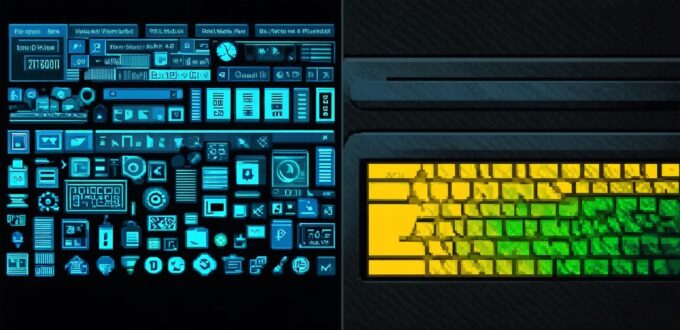Are you familiar with the term software? You probably are, but do you really understand what it means? In this article, we will explore the basics of software, its definition, and why it is so important. We will also provide real-life examples to illustrate these points, and answer some frequently asked questions at the end.
Software can be defined as a set of instructions or data that tells a computer what to do. These instructions are written in a programming language and are executed by the computer’s processor. There are two types of software:
- Operating Systems: Operating systems are responsible for managing the hardware resources of a computer, such as memory, storage, and input/output devices. Examples of operating systems include Windows, macOS, and Linux.
- Applications: Applications are programs that run on top of an operating system and perform specific tasks. Examples of applications include Microsoft Office, Photoshop, and Chrome.
Software is important for several reasons:
Why is Software Important?
1. Efficiency: Software can automate many tasks, making them faster and more efficient. For example, a word processor can help you write a document quickly, while a spreadsheet program can analyze large amounts of data.
2. Convenience: Software can make our lives easier by providing tools that we would otherwise have to do manually. For example, an email client can help you send and receive emails from anywhere with an internet connection, while online banking software can help you manage your finances from the comfort of your own home.
3. Productivity: Software can help us work more productively by providing features that are not available through other means. For example, a project management tool can help you organize tasks and deadlines, while a time tracking app can help you monitor your productivity.
4. Innovation: Software is at the forefront of innovation, enabling new technologies and applications that would be impossible without it. Examples include social media platforms, e-commerce websites, and mobile apps.
Real-Life Examples
Let’s look at some real-life examples to illustrate how software has impacted our lives:
- Google Maps: Before the advent of Google Maps, finding directions was a cumbersome task that involved looking at maps, asking for directions, or getting lost. Now, with just a few clicks on your computer or phone, you can get real-time directions and traffic updates, making travel much more convenient.
- Slack: As remote work becomes increasingly popular, communication tools like Slack have become essential for team collaboration. With Slack, you can chat, share files, and collaborate on projects in real-time, no matter where you are located.
- Dropbox: Dropbox is a cloud storage service that allows you to store and access your files from anywhere with an internet connection. With Dropbox, you can easily share files with colleagues or clients, collaborate on projects, and access your files from any device.
FAQs
1. What is the difference between hardware and software?
Hardware refers to the physical components of a computer, such as the CPU, RAM, and hard drive. Software refers to the instructions or data that tell the computer what to do.
2. Is software a product or a service?
Software can be both a product and a service, depending on how it is delivered and used. For example, Microsoft Office is a product that you purchase and install on your computer, while Salesforce is a cloud-based service that you access via the internet.
3. What are the benefits of open-source software?
Open-source software is software that is freely available for anyone to use, modify, and distribute. Some of the benefits of open-source software include:
- Cost-effectiveness: Open-source software is typically free to download and use, making it a cost-effective alternative to proprietary software.
- Transparency: Open-source software is often more transparent than proprietary software, as users can access the source code and make changes if necessary.
- Flexibility: Open-source software can be customized to meet specific needs, providing greater flexibility than proprietary software.

4. How do I choose the right software for my business?
When choosing software for your business, it’s important to consider your specific needs and requirements. Some factors to consider include:
- Cost: Determine how much you can afford to spend on software and look for options that fit within your budget.
- Scalability: Consider whether the software can scale as your business grows.
- Integration: Look for software that integrates with other tools and systems you use, such as your accounting or CRM software.
- Support: Choose a vendor that provides adequate support, including training, technical assistance, and customer service.
Conclusion
In conclusion, software is an essential component of modern life, enabling efficiency, convenience, productivity, and innovation. By understanding the basics of software and its importance, you can make informed decisions about which software to use in your business or personal life.
